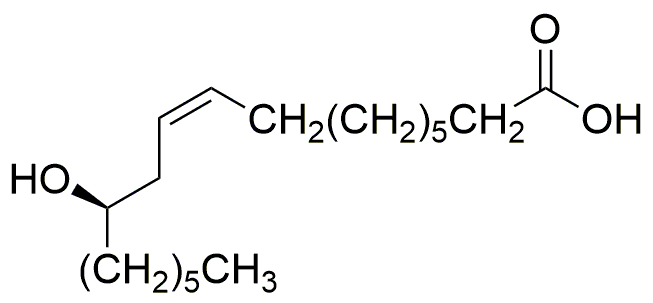Ricinoleic acid is widely utilized in research focused on various practical applications across multiple industries. Here are five key uses:
- Cosmetics and Personal Care: This compound is a popular ingredient in skin care products due to its moisturizing properties. It helps to hydrate and soothe the skin, making it ideal for lotions and creams.
- Pharmaceuticals: Ricinoleic acid is used in the formulation of certain medications, particularly as a laxative. Its ability to stimulate bowel movements provides relief for individuals suffering from constipation.
- Food Industry: As a food additive, it serves as an emulsifier and stabilizer in various products, enhancing texture and shelf life. This application is particularly beneficial in processed foods.
- Biodegradable Plastics: The chemical is being explored as a renewable resource for producing biodegradable plastics, offering an eco-friendly alternative to traditional petroleum-based plastics.
- Lubricants and Coatings: Its unique properties make it suitable for formulating high-performance lubricants and coatings, providing excellent thermal stability and reducing friction in industrial applications.
General Information
Properties
Safety and Regulations
Applications
Ricinoleic acid is widely utilized in research focused on various practical applications across multiple industries. Here are five key uses:
- Cosmetics and Personal Care: This compound is a popular ingredient in skin care products due to its moisturizing properties. It helps to hydrate and soothe the skin, making it ideal for lotions and creams.
- Pharmaceuticals: Ricinoleic acid is used in the formulation of certain medications, particularly as a laxative. Its ability to stimulate bowel movements provides relief for individuals suffering from constipation.
- Food Industry: As a food additive, it serves as an emulsifier and stabilizer in various products, enhancing texture and shelf life. This application is particularly beneficial in processed foods.
- Biodegradable Plastics: The chemical is being explored as a renewable resource for producing biodegradable plastics, offering an eco-friendly alternative to traditional petroleum-based plastics.
- Lubricants and Coatings: Its unique properties make it suitable for formulating high-performance lubricants and coatings, providing excellent thermal stability and reducing friction in industrial applications.
Documents
Safety Data Sheets (SDS)
The SDS provides comprehensive safety information on handling, storage, and disposal of the product.
Product Specification (PS)
The PS provides a comprehensive breakdown of the product’s properties, including chemical composition, physical state, purity, and storage requirements. It also details acceptable quality ranges and the product's intended applications.
Certificates of Analysis (COA)
Search for Certificates of Analysis (COA) by entering the products Lot Number. Lot and Batch Numbers can be found on a product’s label following the words ‘Lot’ or ‘Batch’.
*Catalog Number
*Lot Number
Certificates Of Origin (COO)
This COO confirms the country where the product was manufactured, and also details the materials and components used in it and whether it is derived from natural, synthetic, or other specific sources. This certificate may be required for customs, trade, and regulatory compliance.
*Catalog Number
*Lot Number
Safety Data Sheets (SDS)
The SDS provides comprehensive safety information on handling, storage, and disposal of the product.
DownloadProduct Specification (PS)
The PS provides a comprehensive breakdown of the product’s properties, including chemical composition, physical state, purity, and storage requirements. It also details acceptable quality ranges and the product's intended applications.
DownloadCertificates of Analysis (COA)
Search for Certificates of Analysis (COA) by entering the products Lot Number. Lot and Batch Numbers can be found on a product’s label following the words ‘Lot’ or ‘Batch’.
*Catalog Number
*Lot Number
Certificates Of Origin (COO)
This COO confirms the country where the product was manufactured, and also details the materials and components used in it and whether it is derived from natural, synthetic, or other specific sources. This certificate may be required for customs, trade, and regulatory compliance.


